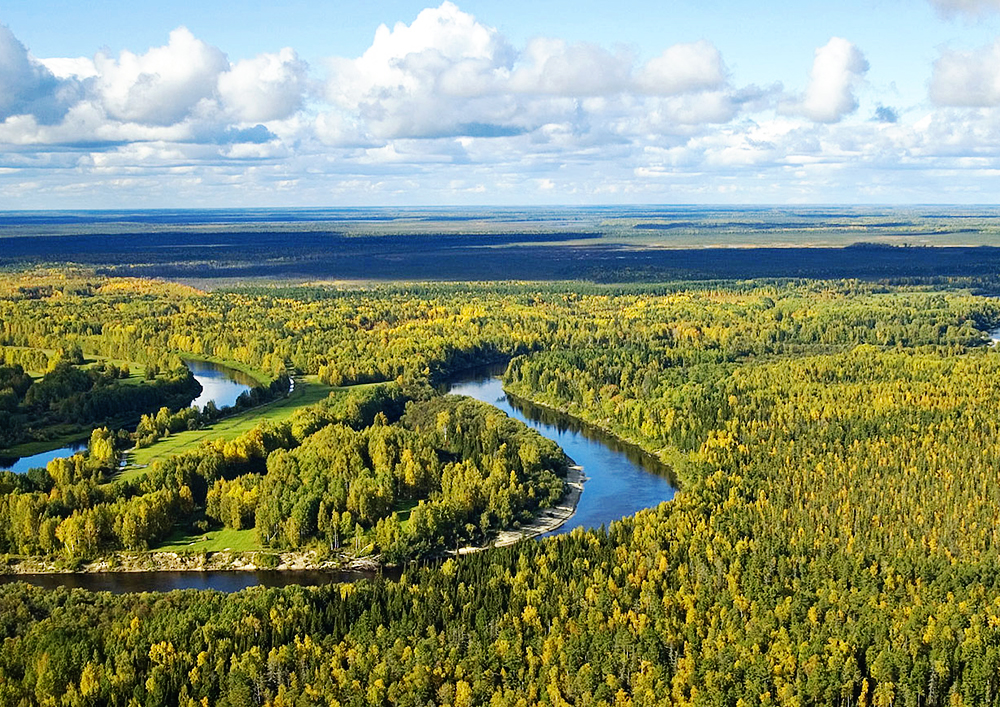Siberia
Siberia is extremely varied. The division into regions can be made in a quite arbitrary way: western and eastern Siberia, Altai, Tuva and Khakasiya, the Sayan Mountains, Trans-Baikal, Yakutia, the Far North. The length from the east to the west is 7000 km; from the north to the south it is 3500 km Siberia has a total area of 10 million sq km. Rich in natural resources, Siberia is still not explored in all aspects.
300 years ago Mikhail Lomonosov, a Russian scientist, predicted that the power of Russia would grow at the expense of Siberia. Here, in Siberia there are rich gas and oil fields, gold and diamond deposits, reserves of wood; there is an abundance of fir-bearing animals, fish, and colossal reserves of the purest water. Hydro-electric power stations are built on the rivers of Siberia. Everything is tremendous here: the Ob’, the Irtysh, the Enisei, the Angara, and the Lena Rivers, the Altai and Sayan Mountain Ranges, Lake Baikal and Lake Teletskoye.
The main part of the Trans-Siberian Railway, which was built at a turn of the 20th century and has a length of 9332 km, runs through Siberia. Siberian frosts are something special; the temperature drops to - 40 - 50º Celsius. But in summer, in the south, the temperature reaches + 30º Celsius; and one can swim, though the temperature of water rises only to + 17+18º Celsius. In the south of Siberia large cities – Omsk, Novosibirsk, Krasnoyarsk and Irkutsk – are located. No doubt that the gem of eastern Siberia is Lake Baikal, which contains approximately a fourth of the world reserves of fresh water. The water of the lake is so clean and transparent that a white disc of 30 centimetres in diameter, lying at a depth of 40 meters, can be discerned.

